Jean-louis Dessalles - Publications [See all papers] - [Selected Papers] - [Talks]
See also Books:
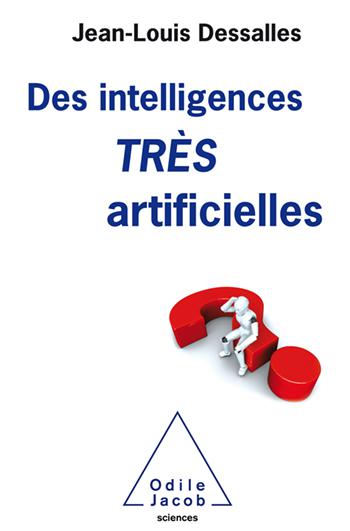

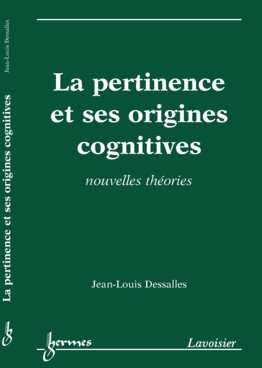
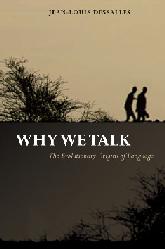

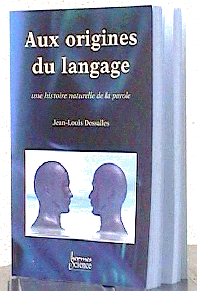
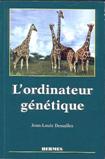
 Topics
Topics
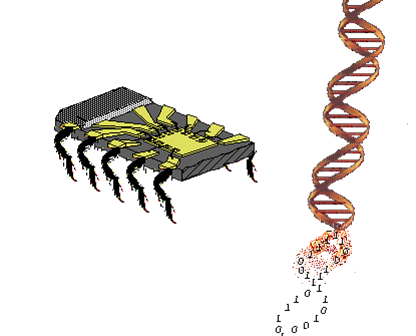 Social signals
Social signals
Evolutionary origins of language
Evolution and information
Simplicity Theory
Cognitive modelling of interest
Cognitive modelling of relevance
Cognitive modelling of meaning
Cognitive modelling of emotional intensity
Cognitive modelling of concept learning
Emergence as complexity drop
Qualia cannot be epiphenomenal
→ [ See all papers ] → [ Selected papers ]
Selected topic: Evolution and information
| Evolution through natural selection can be simulated using techniques such as genetic algorithms. The conceptual analysis of evolutionary phenomena suggests that information plays a major role in the long term. We might even consider that information matches the definition of being living. |
My 6 papers about EVOL.&INFORM. (but see my other papers)
-
Gaucherel, C., Gouyon, P.-H. & Dessalles, J.-L. (2019). Information, the hidden side of life. London: ISTE John Wiley.
Keywords: EVOL.&INFORM.
This book explores the unity of life. It proposes that the concept of information is the inner essence of what we today call life.
The importance of information for our species is obvious. Human beings are highly dependent on information, constantly exchanging with conspecifics. In a less apparent way, we are the product of genetic and epigenetic information which determines our development in a given environment from a fertilized egg to the adult stage. Even less apparent is that information plays a determining role in ecosystems. This observation may include the prebiotic systems in which life emerged.
Our claim is that Nature processes information continuously. This means that even beyond living entities, we can see messages and decoding procedures. Nature can be said to send messages to its own future and then to decode them. Nature "talks" to itself! The systematic organization of messages suggests that, in some respects, we should even speak of the "languages" of Nature. -
Dessalles, J.-L., Gaucherel, C. & Gouyon, P.-H. (2016). Le fil de la vie - La face immatérielle du vivant. Paris: Odile Jacob.
Keywords: EVOL.&INFORM.
Et si certaines entités vivantes n’étaient pas matérielles ? Potentiellement éternelles, en lutte pour la survie, elles évoluent. Elles constituent ce qui unit les êtres à travers le temps. Elles sont le fil de la vie.
Ces entités vivantes immatérielles sont des informations. Elles existent à travers nous, dans nos gènes, dans notre culture, dans nos écosystèmes. La vie produit l’information, lit l’information et se définit par l’information qu’elle porte. Ce livre nous aide à comprendre le monde vivant d’une manière toute nouvelle !
Il est le résultat de discussions passionnées entre trois chercheurs qui, chacun à sa manière, étaient parvenus au même questionnement à propos de la nature. Ils nous proposent une nouvelle description du vivant, où la lutte pour l’existence n’est pas celle des êtres, mais des messages qui passent à travers eux et dont ils sont les hôtes éphémères.
→ Présentation du livre Share:
→ Accès au livre -
Dessalles, J.-L. (2010). Providing information can be a stable non-cooperative evolutionary strategy. Paris: Technical Report Telecom ParisTech 2010D025.
Keywords: EVOL.&INFORM.
Human language is still an embarrassment for evolutionary theory, as the speaker’s benefit remains unclear. The willingness to communicate information is shown here to be an evolutionary stable strategy (ESS), even if acquiring original information from the environment involves significant cost and communicating it provides no material benefit to addressees. In this study, communication is used to advertise the emitter’s ability to obtain novel information. We found that communication strategies can take two forms, competitive and uniform, that these two strategies are stable and that they necessarily coexist.
→ Download PDF Share: -
Dessalles, J.-L. (1996). L’ordinateur génétique. Paris: Hermes Science.
Keywords: EVOL.&INFORM.
Améliorer l’aérodynamique d’une voiture, gérer un portefeuille boursier, aiguiller des messages dans un commutateur téléphonique, tous ces problèmes techniques peuvent être résolus d’une manière biologique ! Depuis des millions d’années, la nature résout des problèmes très variés (locomotion, perception, protection, camouflage, ...) en utilisant toujours la même « méthode » : les variations génétiques et l’évolution par sélection. Les algorithmes génétiques résultent de la transposition informatique de la génétique et de l’évolution naturelles.
→ Présentation du livre Share:
→ Accès au livre -
Dessalles, J.-L. (1992). Biomimétisme des algorithmes génétiques. In P. Bourgine (Ed.), Apprentissage, évolution, adaptation - Actes des journées de Rochebrune, 14-21. Megève: AFCET.
Keywords: EVOL.&INFORM. -
Dessalles, J.-L. (1992). Biomimetic use of genetic algorithms. In R. Männer & B. Manderick (Eds.), Proceedings of the Conference on Parallel Problem Solving from Nature, 127-135. Amsterdam: North-Holland.
Keywords: EVOL.&INFORM.
Genetic algorithms are considered as an original way to solve problems, probably because of their generality and of their "blind" nature. But GAs are also unusual since the features of many implementations (among all that could be thought of) are principally led by the biological metaphor, while efficiency measurements intervene only afterwards. We propose here to examine the relevance of these biomimetic aspects, by pointing out some fundamental similarities and divergences between GAs and the genome of living beings shaped by natural selection. One of the main differences comes from the fact that GAs rely principally on the so-called implicit parallelism, while giving to the mutation/selection mechanism the second role. Such differences could suggest new ways of employing GAs on complex problems, using complex codings and starting from nearly homogeneous populations.
→ Download PDF Share: